10 Best Nano Schooling Fish
Posted by Miles Harrison on 01/13/2022
Last Updated on 10/05/2022
If you're new to planted tanks or freshwater tanks in general, it's easy to be overwhelmed with the variety of schooling fish.
Nano tanks are great for their portability and small size, but a small aquarium limits your stocking choices.
If you’re looking for nano schooling fish, look no further - because we’re going to recommend our 10 best for your nano tank!
December's Giveaways on Light Fish
Guppies
Guppies are a common freshwater fish that can be found in most aquarium stores. These fish are native to the northern coast of South America and can be found in countries such as Suriname, Guyana, Trinidad and Tobago, and Venezuela.
These fish prefer temperatures between 78 and 82°F and can be strikingly good-looking!
Many aquarists have even bred unique color variants, that can fetch a high price tag. Guppies are some of our favorite fish that will school in a nano tank.
- Size: 2 inches
- Difficulty: Beginner
- Minimum Tank Size: 5 gallons
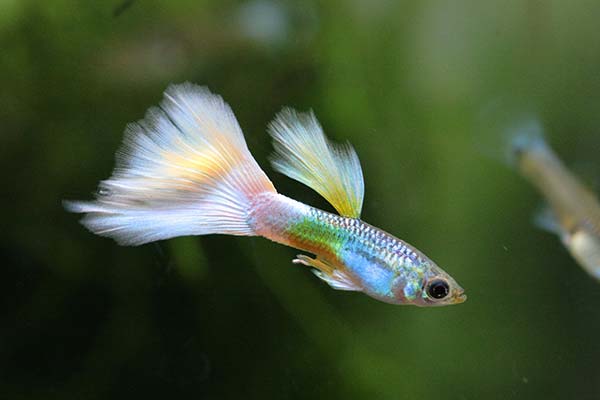
Neon Tetras
Neon Tetras are known for their signature blue and red coloration. Native to the Orinoco and Negro Rivers in South America, these fish make an excellent addition to a planted aquarium that has both green and red flora.
In large groups, neon tetras will form tight schools. As a bonus, these fish are incredibly peaceful. Found natively in softer water, these fish can even adapt to hard water conditions!
- Size: 2 inches
- Difficulty: Beginner
- Minimum Tank Size: 5 gallons
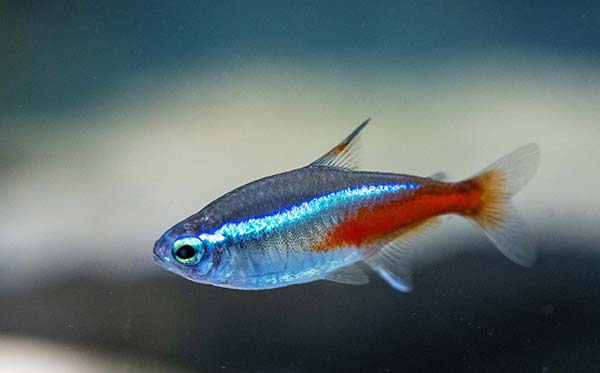
Cloud Minnows
Cloud Minnows are active and playful fish. These fish will often chase each other around the tank.
One of the best parts about this fish is that they are one of the few widely available freshwater fish that can thrive in cold water conditions.
Native to China, cloud minnows are often silver in color, however, a rare golden version has also been making its way around aquarium circles. These are hardy fish that do great in a nano aquarium.
- Size: 2.5 inches
- Difficulty: Beginner
- Minimum Tank Size: 5 gallons
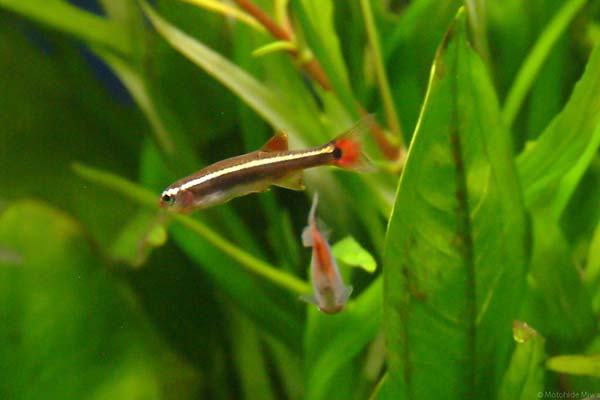
Rummy-nose Tetra
Originating in South America, the rummy-nose tetra makes an excellent addition to a freshwater tank with a large number of green plants.
Growing up to 2 inches in length, these fish look the same regardless of gender and can form tight schools in large groups.
These fish possess the unique ability to alert the aquarist when there is a chemical imbalance, as their red nose will begin to turn pale.
- Size: 2.5 inches
- Difficulty: Beginner
- Minimum Tank Size: 10 gallons
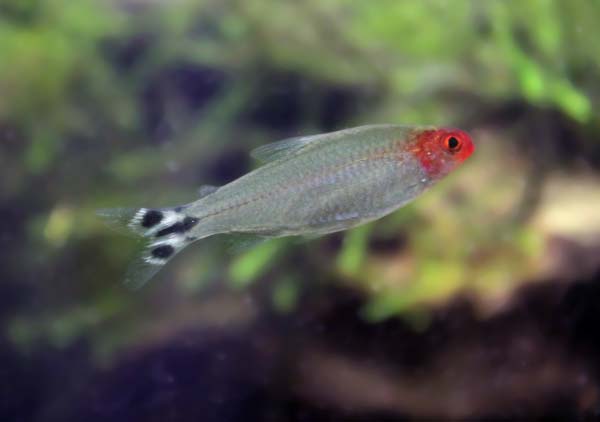
Green Neon Tetra
Similar to the Neon Tetra, Green Neon tetras are incredibly peaceful and hardy fish.
Although called Green Neon, these fish appear blue and are much smaller than the popular Neon Tetra. Interestingly, these fish lose their brilliant colors when aquarium lights are turned off, but regain them once aquarium lighting is turned back on.
These fish originated in soft-acidic water in the Orinoco and Negro rivers of South America but can adapt to hard water conditions.
- Size: 1.5 inches
- Difficulty: Beginner
- Minimum Tank Size: 5 gallons
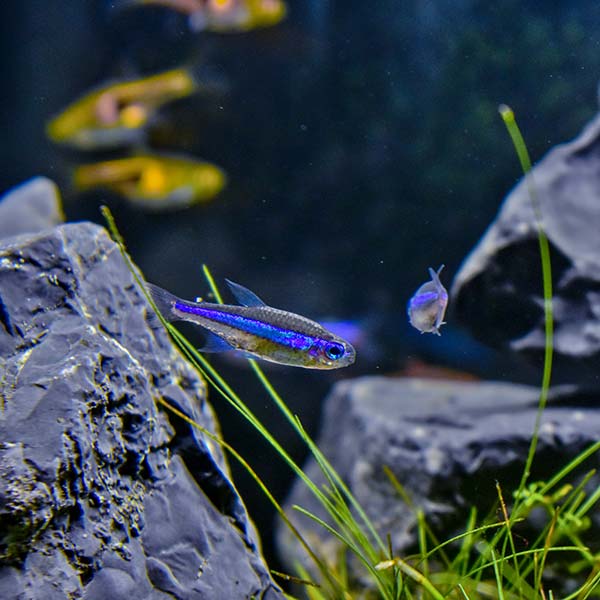
Harlequin Rasboras
Native to Malaysia, Singapore, Sumatra, and southern Thailand, the Harlequin Rasbora is one of the most popular schooling fish available in the hobby.
This species gets its name from a triangular black patch on its body reminiscent of the pattern on a harlequin's costume.
- Size: 1.5 inches
- Difficulty: Beginner
- Minimum Tank Size: 5 gallons
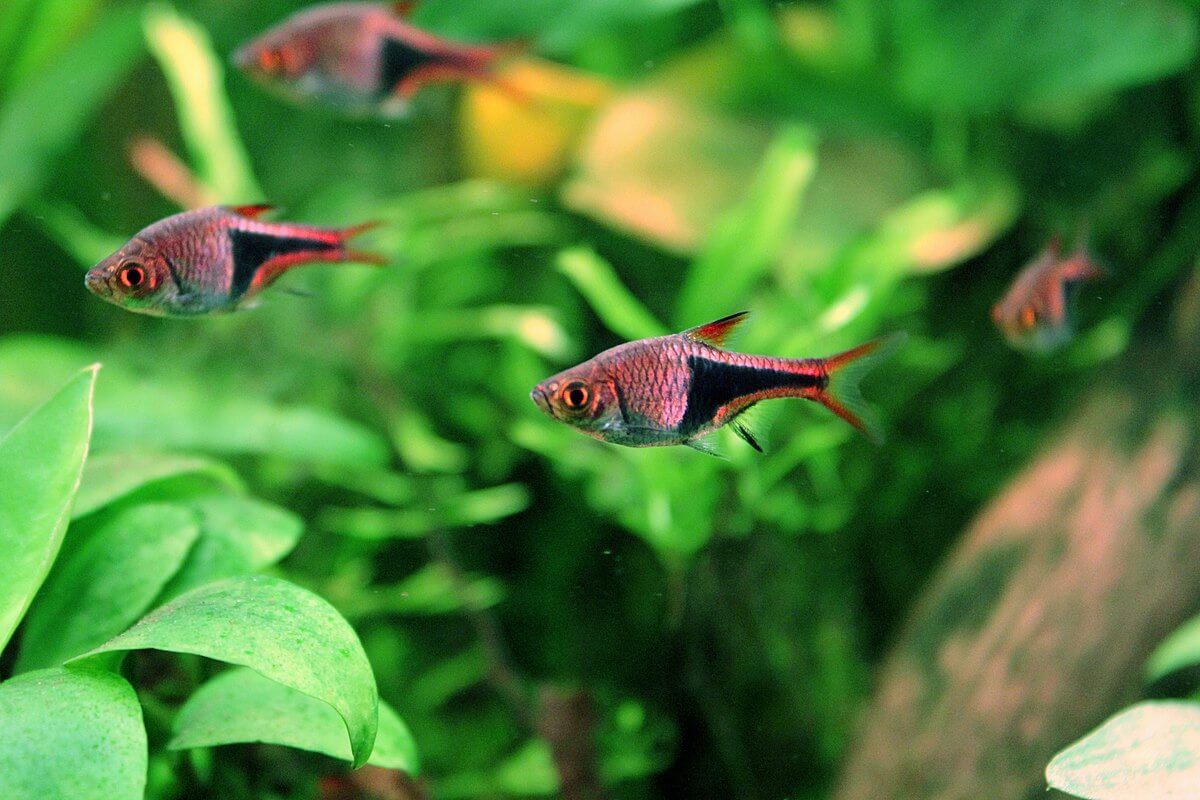
Flame Tetras
Also known as the Von Rio tetra, flame tetras are easy to care for, and were first imported into the United States in the early 1900s.
Native to Brazil, these fish have a bronze/reddish body, and are an extremely peaceful species. When kept in a group, these fish will school quite frequently.
Interestingly, these fish will do well in an aquarium with temperatures as low as 64 °F, making them an attractive option for cold water aquariums.
- Size: 1.5 inches
- Difficulty: Beginner
- Minimum Tank Size: 10 gallons
🛒 Shop Freshwater Fish on Light Fish
Gold Ring Danios
Native to Myanmar and Thailand, Gold Ring Danios are some of the easiest fish to keep. They have a very unique appearance, the body appears golden and is speckled with large amounts of round black spots.
These fish will accept a wide variety of foods and have no special diet requirements. Their easy care requirements make them a perfect choice for new hobbyists! These small fish have a low bioload, which is great for algae prevention.
When kept with groups of 10 or more, you’ll see these fish start to form tight schools. It’s very impressive to see 10 of these golden fish moving around the tank as a group!
- Size: 1.5 inches
- Difficulty: Beginner
- Minimum Tank Size: 10 gallons
Espei Rasboras
Also known as the lambchop rasbora, or the ‘false harlequin’, these fish look very similar to the Harlequin rasbora but have a unique color pattern and striking orange color.
Known to be very tolerant of other inhabitants, these fish will do well with other peaceful aquarium fish.
Espei Rasboras are schooling fish, and prefer to be kept in groups of at least 6. These fish will be much more active when kept in a group, and they’ll reward the aquarist by forming some nice schools!
- Size: 1.5 inches
- Difficulty: Beginner
- Minimum Tank Size: 10 gallons
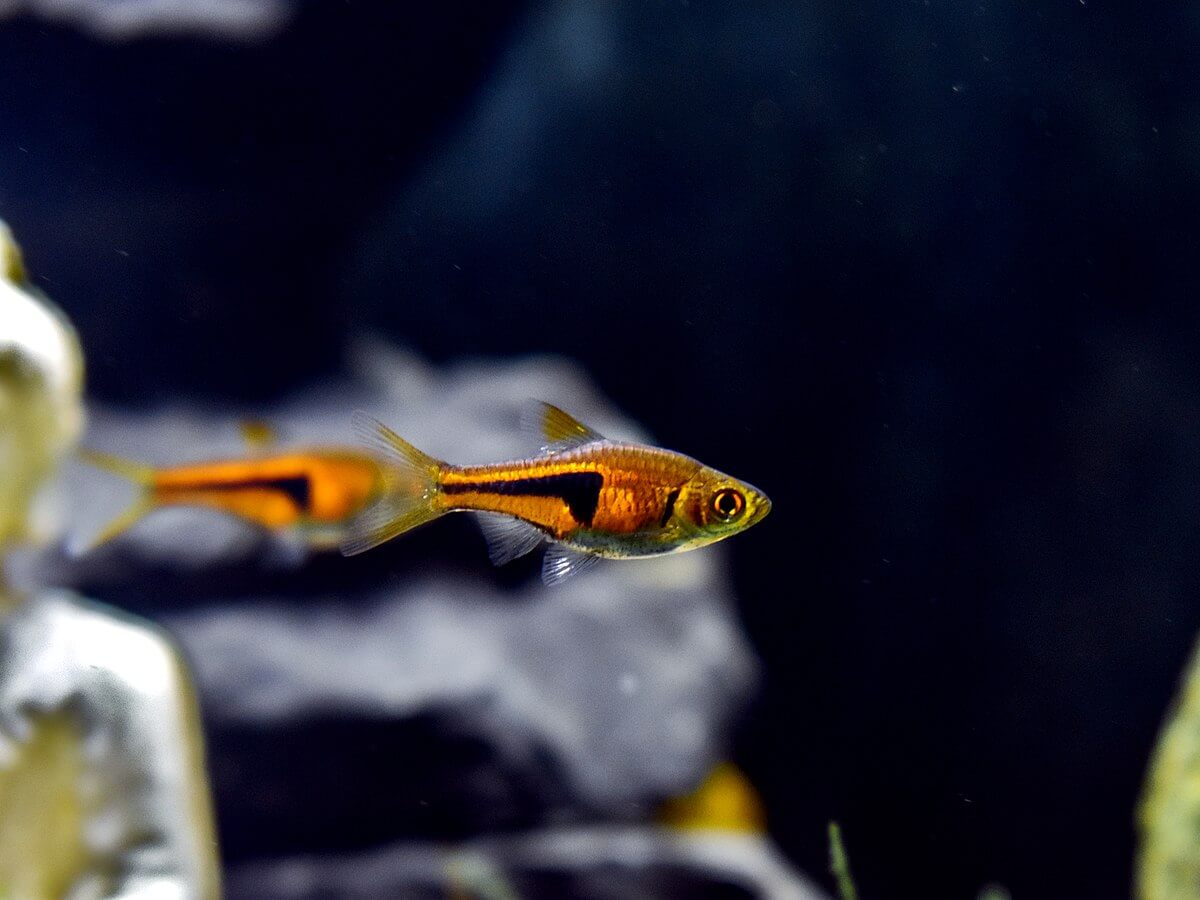
Super Blue Kerri Tetra
Often sold from Czech breeders, the “super blue” color variant of the Kerri tetra is a stunning cultivated strain.
Although these fish can be quite hard to find, these fish are nothing short of impressive to look at. They are also peaceful fish and will do well with additional tank mates, such as cherry shrimp or assassin snails.
These fish are quite active and will investigate different parts of the aquarium to search for new food sources. When the lights come on, these fish will show off their bright blue colors and will swim in small schools.
- Size: 1.5 inches
- Difficulty: Beginner
- Minimum Tank Size: 10 gallons
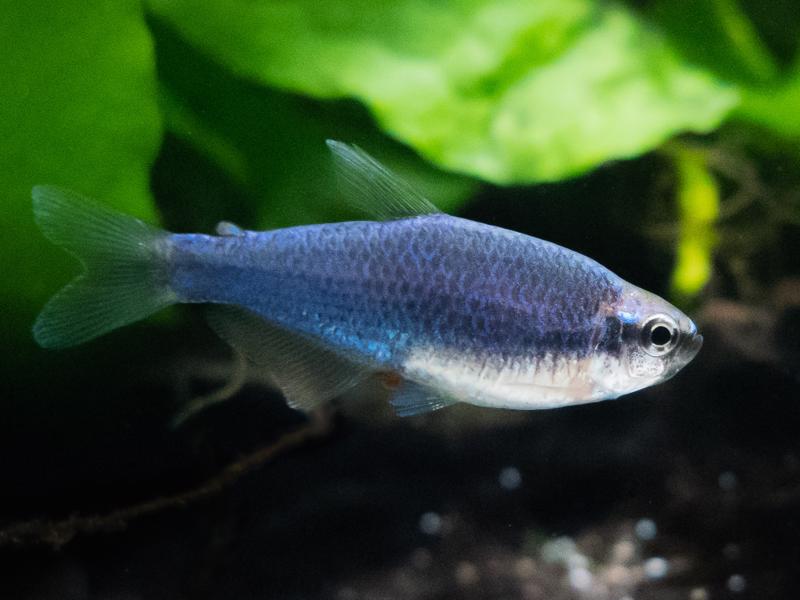
Conclusion
As you can see, there is no single best nano schooling fish. There is an abundance of them! Now that you have some excellent options, one of these might become your new favorite fish!
We love watching schools of these small fish swim around in a nano tank. Seeing a school in a nano aquarium gives a unique sense of scale that cannot be achieved in larger fish tanks.
If none of these options interest you, there are still tons of other suitable nano species out there! Try creating a topic on our community forum, and some of our members will be happy to provide some more suggestions.
December's Giveaways on Light Fish






